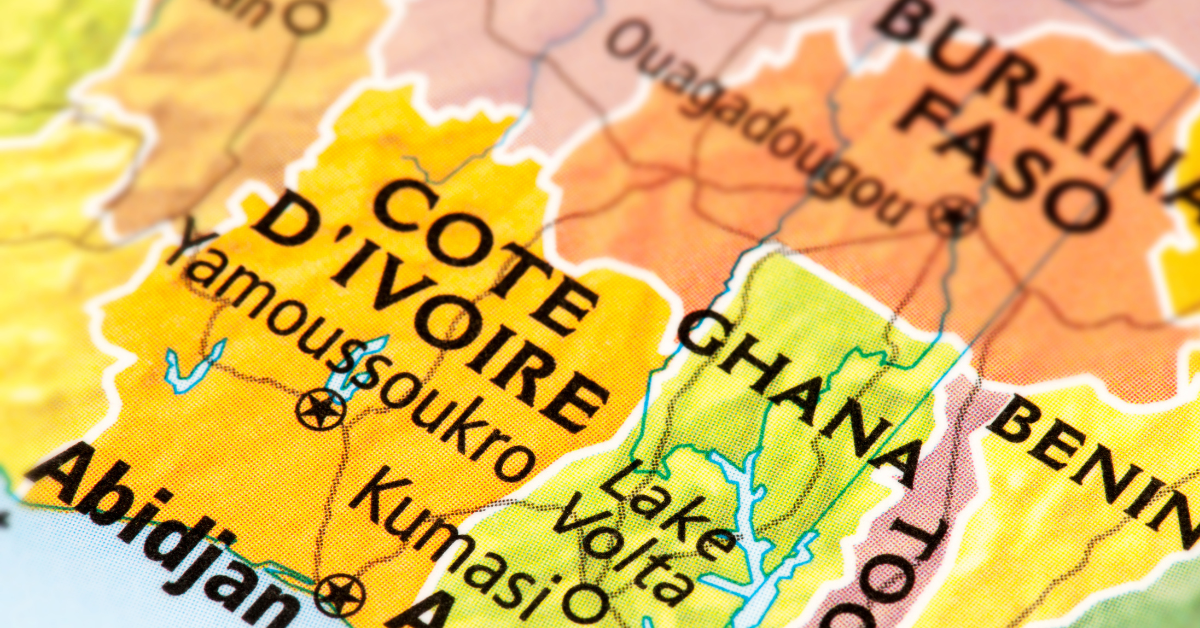Côte d’Ivoire, a West African nation, was long known in Japan as “Ivory Coast”, a direct translation of its French name. Today, however, the official usage is “Côte d’Ivoire”, following a request from the Ivorian government. Understanding this change helps reveal not only linguistic shifts but also the importance of national identity and respect in international relations.
The Origin of the Term “Ivory Coast”
The term “Ivory Coast” is a direct translation of the French Côte d’Ivoire. In French, “Côte” means coast, and “Ivoire” means ivory. European nations had the custom of naming African coasts based on trade goods. Regions where ivory was actively traded were called “Ivory Coast.”
In the same West African region, there were several other similar names:
| Name | Current Country | Origin of the Name |
|---|---|---|
| Ivory Coast | Côte d’Ivoire | Named for active ivory trade |
| Gold Coast | Ghana | Known for gold production |
| Pepper Coast | Liberia area | Named for pepper trade |
| Slave Coast | Benin area | Center of the slave trade |
These trade-based names were easy for Europeans to understand but did not reflect the culture or lives of the local people. In Japan, French was directly translated, and the country was known as “Ivory Coast”, appearing in maps and school textbooks.
Past Kanji Notation and the Current Official Name
Even after independence, for a long time Japan used the expression “Ivory Coast Republic” in kanji. However, from the 1980s onward, the Ivorian government requested through the United Nations that its country name be used in French without translation. In response, Japan and many other nations adopted the phonetic transcription “Côte d’Ivoire Republic” as the official form.
| Era | Japanese Name | Background |
|---|---|---|
| Colonial era to post-independence | Ivory Coast Republic | Direct translation of French name |
| From the 1980s | Côte d’Ivoire Republic | Government requested phonetic transcription |
This shift was not just a matter of spelling but an important decision to protect national dignity and enhance international presence.
Why Did It Change from Translation to Transcription?
Several factors explain why the name changed from a literal translation to a phonetic transcription.
- International Consistency
Using the same name “Côte d’Ivoire” in all languages prevents confusion and ensures consistency in diplomacy and economic relations. - Avoiding Colonial Expressions
The term “Ivory Coast” was based on trade goods, a European-centered view. For an independent country, such a label did not reflect national pride. - Preventing Confusion with Other Regions
Since names like “Gold Coast” and “Pepper Coast” existed, Côte d’Ivoire risked losing uniqueness. By adopting “Côte d’Ivoire”, it reinforced its independent identity.
Thus, the use of “Côte d’Ivoire” rather than “Ivory Coast” became an international standard reflecting the will of the nation.
Comparison with Other Country Name Changes
The case of Côte d’Ivoire is easier to understand when compared with other countries that have changed names.
| Old Name | New Name | Reason for Change |
|---|---|---|
| Ivory Coast | Côte d’Ivoire | To avoid colonial expression |
| Burma | Myanmar | Government decision to unify name |
| Ceylon | Sri Lanka | Abandoning colonial-era name |
| Zaire | Democratic Republic of Congo | Political regime change |
As seen here, a country’s name change is not simply a matter of translation. It is an important act reflecting history, culture, and international standing.
Use of “Ivory Coast” in Japan
For decades in Japan, the name “Ivory Coast” was widely used, frequently appearing in geography textbooks and newspapers. However, in the 1990s, the Ministry of Foreign Affairs and major media organizations standardized usage to “Côte d’Ivoire,” and the old name gradually disappeared.
| Period | Usage | Typical Media |
|---|---|---|
| Postwar to 1980s | Ivory Coast was common | School textbooks, newspapers, maps |
| From the 1990s | Unified to Côte d’Ivoire | Ministry of Foreign Affairs, major media |
| Present | Only phonetic transcription in official use | Education, diplomacy, international documents |
Nevertheless, among older generations and in historical contexts, the name “Ivory Coast” may still appear. This requires explanation to avoid confusion among foreigners learning Japanese or African history.
Ivory Trade and the Naming of the Coast
The naming of Côte d’Ivoire as “Ivory Coast” is directly linked to the ivory trade. Europeans valued ivory as a luxury item for piano keys and ornaments. Thus, regions where ivory was collected became naturally labeled as “Ivory Coast.”
| Trade Item | Usage | Historical Significance |
|---|---|---|
| Ivory | Piano keys, carvings, jewelry | Highly prized in 19th-century Europe |
| Gold | Currency, ornaments | Basis for “Gold Coast” |
| Pepper | Spice, trade commodity | Basis for “Pepper Coast” |
From this table, it is clear that these names reflected European commercial values rather than local culture or identity.
Conclusion
The reason Côte d’Ivoire was once called “Ivory Coast” in Japanese lies in the direct translation of its French name. However, after independence, the government demanded that the French name itself be used internationally, and today the official designation is “Côte d’Ivoire Republic”.
This change was not just linguistic but a crucial measure to protect national dignity and strengthen trust in the international community. For foreigners, understanding this name transition helps deepen awareness of international relations. While “Ivory Coast” remains relevant for historical study, in modern official contexts, using “Côte d’Ivoire” is the correct and respectful choice.






